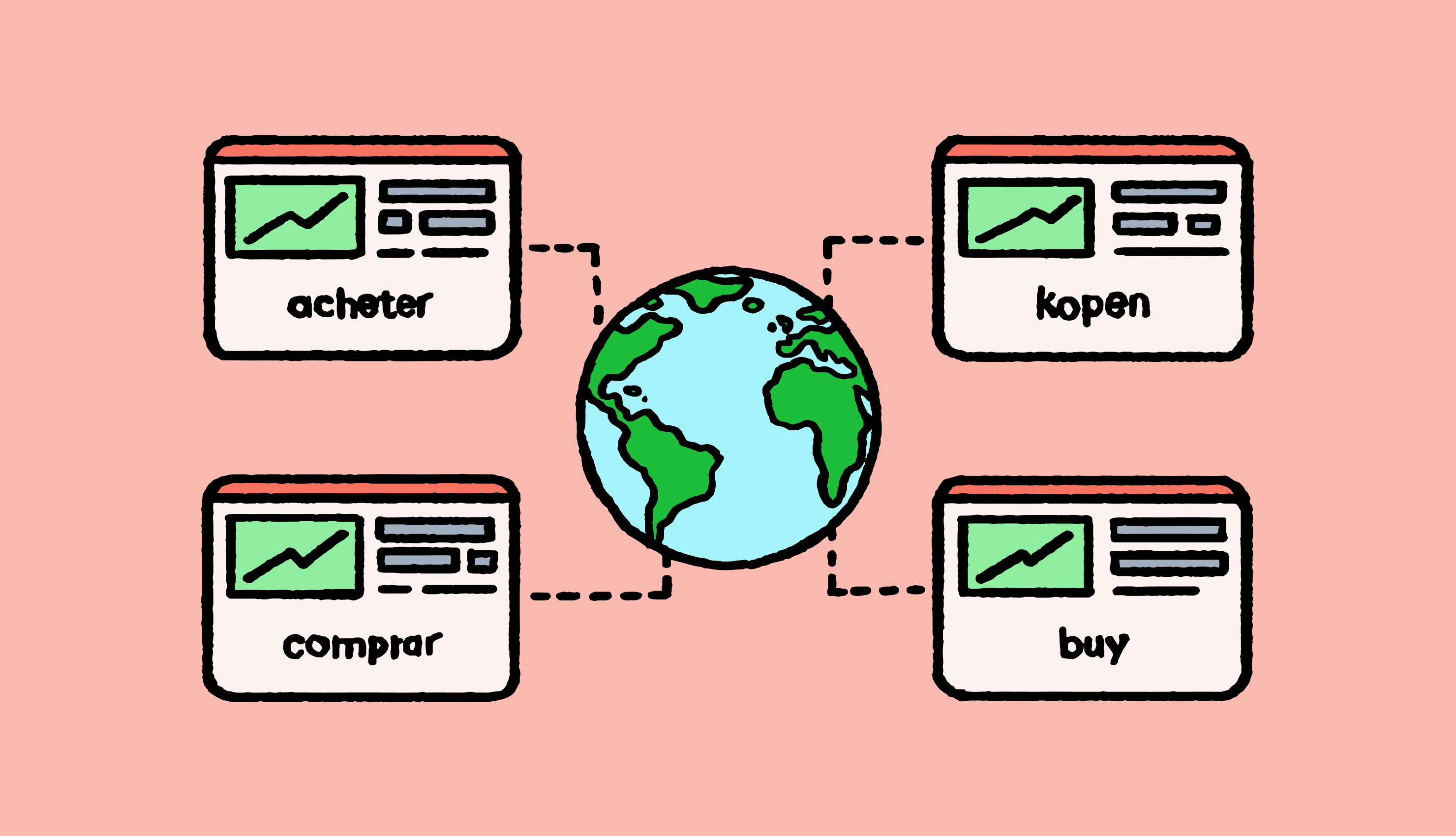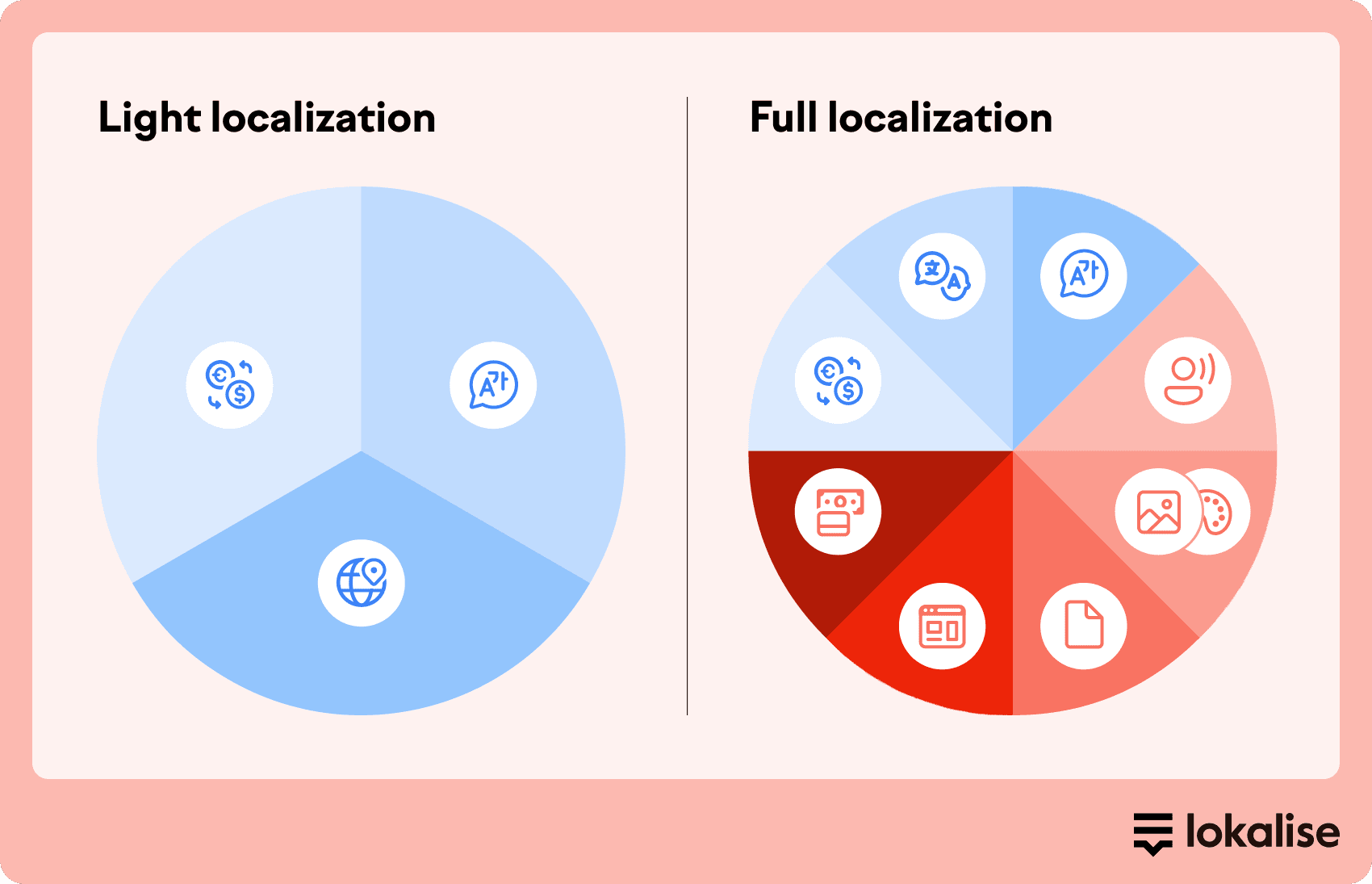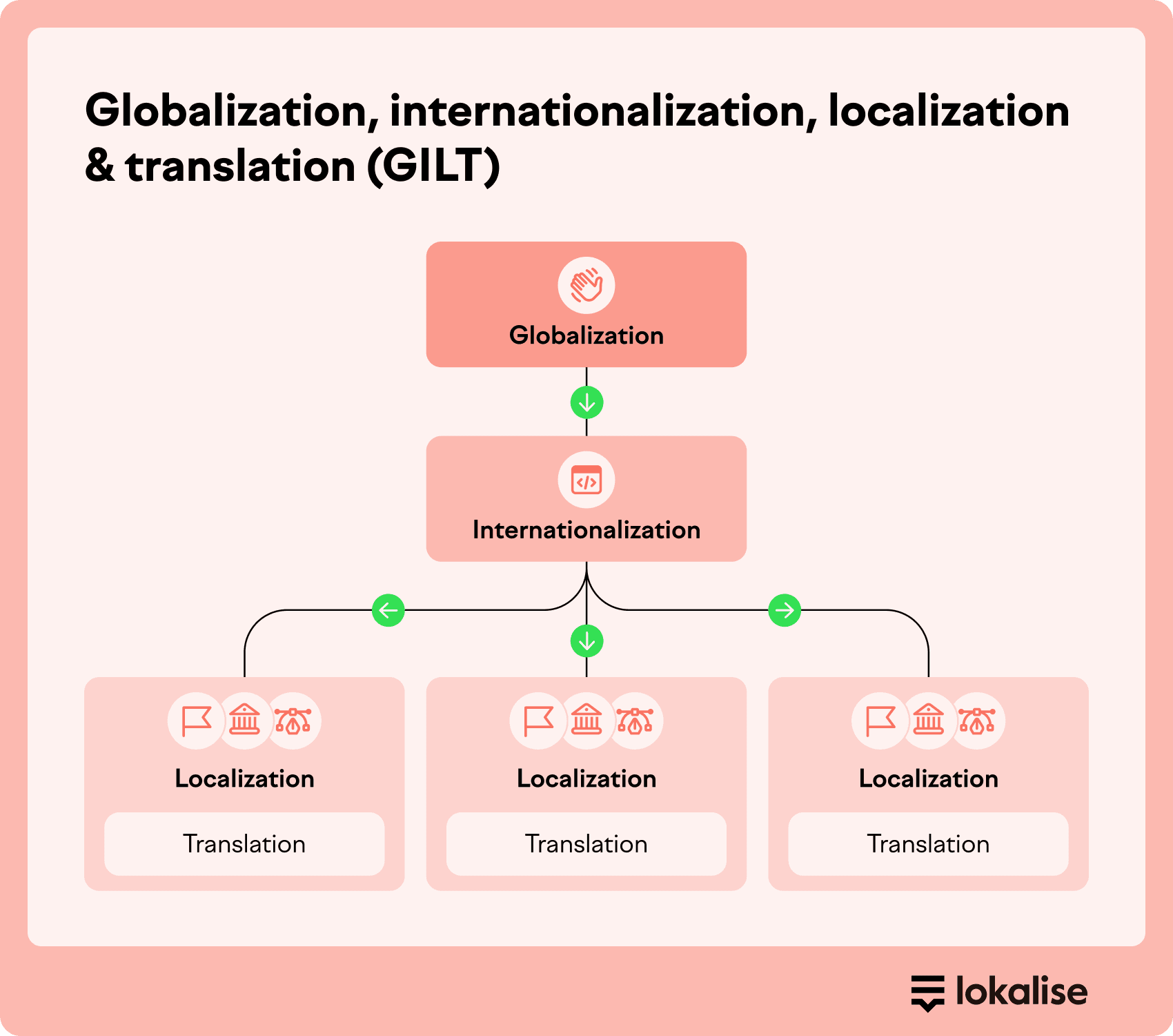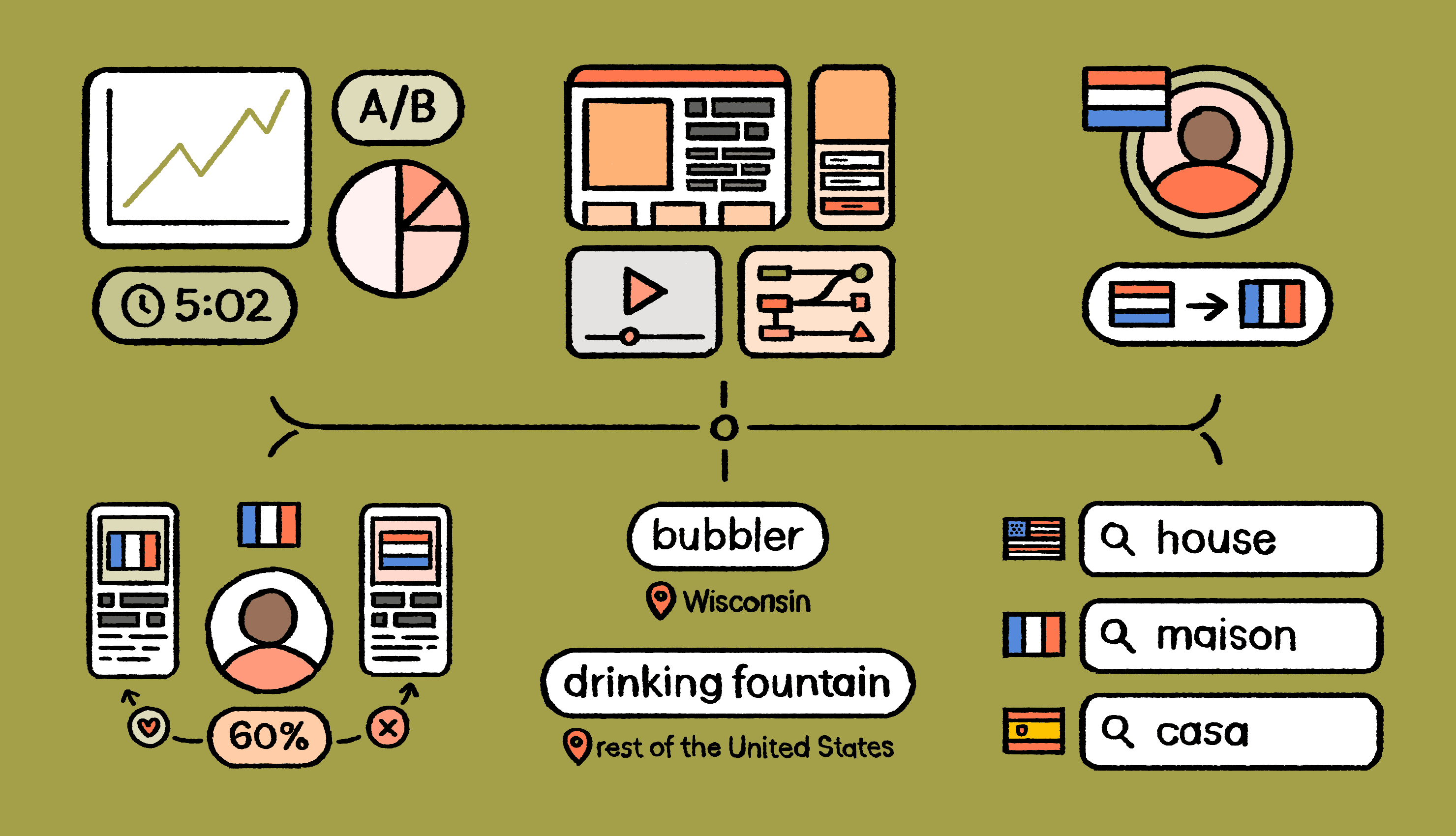User experience and design
The Chinese language flows from top to bottom and right to left; Japanese and Korean combine phonetic scripts with Chinese characters; Arabic and Hebrew read from right to left; and tongues from French to Finnish carry glyphs and glosses on their vowels and consonants.
When English text is translated into German, text length can expand by up to 30%, meaning design needs to account for the extra space. Every language has its unique nuances so your user interface, design, and fonts need to adapt to each one.
Payment methods
Localized payment methods should not be overlooked. It’s more than showing local currencies on your price list. While credit cards are widely used in the West, other regions use bank transfers, cash-on-delivery, and even text messages to make payments. Sounds a long way from translation? It is. This is true localization.
Legal requirements
Localizing your business to fit the rules and regulations of your target audience should not be left to the end. Legal requirements vary from one state, country, and continent to the next, so you need to make sure your product, services, and adhere to them. For example, most European countries are subject to the General Data Protection Regulation which ensures data privacy. Another example is Quebec’s Bill 64. It’s fairly unique in that it requires businesses with more than 50 employees to conduct their activities in French. Knowing the ins and outs of legal requirements is essential to your success in new markets, not just in terms of legally being able to do business, but also to build brand trust.
Customer support
You need to be there for users in their language when they need you the most. By localizing your support and self-serve content across the entire journey will show customers you care. Support can include FAQs, documentation, knowledge bases, video tutorials, chat support, onboarding, and more.
The benefits of localization
Localization takes work. But the more you do it, the more you’ll learn – and the more return on localization investment you’ll see over time.
- Reach new markets: Over half of all consumers say language matters more than price.
- Reduce business risk: In international business, mistranslated information can lead to customer actions, lawsuits, and worse. Treating localization as a business process, with agreed methods and workflows for approaching each market, keeps the risks in check.
- Increase customer satisfaction: When you speak to customers in their language, with knowledge of their cultural norms, they’re more likely to buy from you, and recommend you to friends and family.
- Drive growth worldwide: All of this, of course, contributes to your bottom line. More sales. Greater profits. And broader market appeal that leads to more opportunities for growth. Treat localization as an investment that lets you do more business.
How to do localization
Localization needs to be a well-thought-out process and tailored to your business. But, before we jump into a high-level example of how companies do localization, let’s take a look at the three most important things you’ll need:
- A localization strategy
- Localization team
- Translation management tool
1. Create a localization strategy
This is possibly THE most important step. A localization strategy will help you plan the resources you need, as well as which markets to target, and the degree of localization you choose.
Read this guide for a deep dive into how to create a localization strategy.







